The Berkshires Bowling Alley that Inspired "The Big Lebowski"
It’s been 36 years since the release of The Big Lebowski, the irreverent cult comedy by Joel and Ethan


Over the past 120 years, more than 900,000 design patents have been issued in the United States for everything from cars and space rovers to desk chairs and tape dispensers. The things around us, whether we are driving them, sitting in them, or using them in daily tasks, impact us in different ways based on their functionality, and also based on their design. Design can elevate a mundane object to something treasured. In his new book, Patented, “an unprecedented history and field guide to more than a century of fascinating product and industrial design,” which comes out today, author and historian Thomas Rinaldi combed through the United States design patent records to curate a list of 1,000 items, both familiar and obscure, to shed new light on the objects that make up our daily lives. We spoke with Rinaldi to learn about why he took on this task and the surprises he found along the way.
You can join Untapped New York and author Thomas Rinaldi for an in-depth dive into the design patents of his book at our upcoming virtual talk! Attendees to the talk will receive a discount code for 20% off a copy of the book. Tickets to this talk are just $10, or free if you are an Untapped New York Insider! You can gain access to unlimited free virtual events per month and unlock a video archive of 100+ past virtual experiences as an Untapped New York Insider starting at $10/month. Already an Insider? Register here! If you can’t make it live, register for this event and we will send you a link to the recording once it airs!
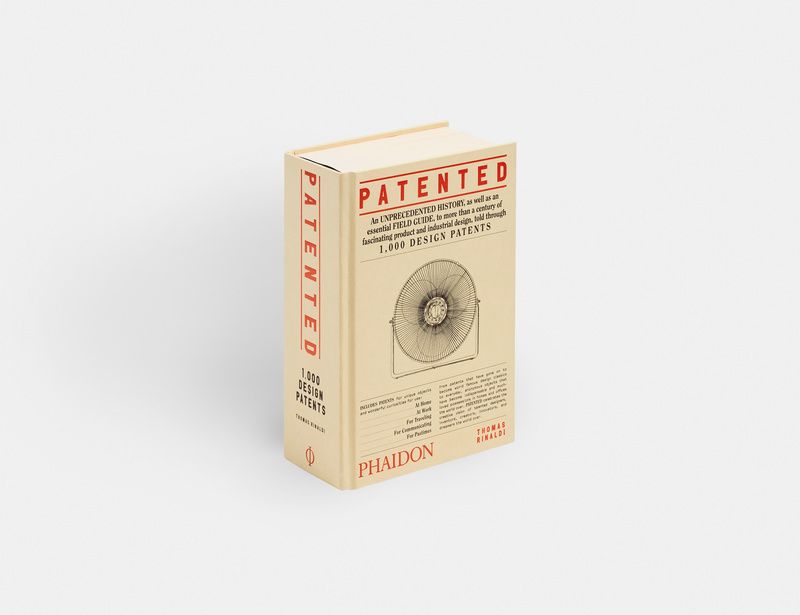
Patented: 120 Years in 1,000 Designs
“I’ve been a historian of various things for a long time in various capacities,” says Rinaldi, who has written New York Neon (and led neon sign tours for Untapped New York!) and co-authored Hudson Valley Ruins: Forgotten Landmarks of an American Landscape. Most of Rinaldi’s writing is about architecture and in that field, it’s often important to find out who the architect of a certain building is. It’s “a trophy, a common goal,” Rinaldi explains, that can help lend more importance to a building you are writing about or trying to save. Rinaldi had “long assumed that as hard as it was to do this for buildings, it was basically impossible to do it for the great bulk of everyday objects around us,” beyond certain items like famous cars or iconic pieces of furniture like an Eames chair.
As Rinaldi’s curiosity about the design provenance of everyday items increased, he began to Google. In his search results, he found design patents. Most people might think of patents in relation to mechanics and invention rather than design, but design patents are strictly for the object’s design. In discovering design patents, Rinaldi uncovered “this huge incredible reservoir of a knowledge base that tells you who designed 900,000 things. You can know who designed it and when and often who for.”
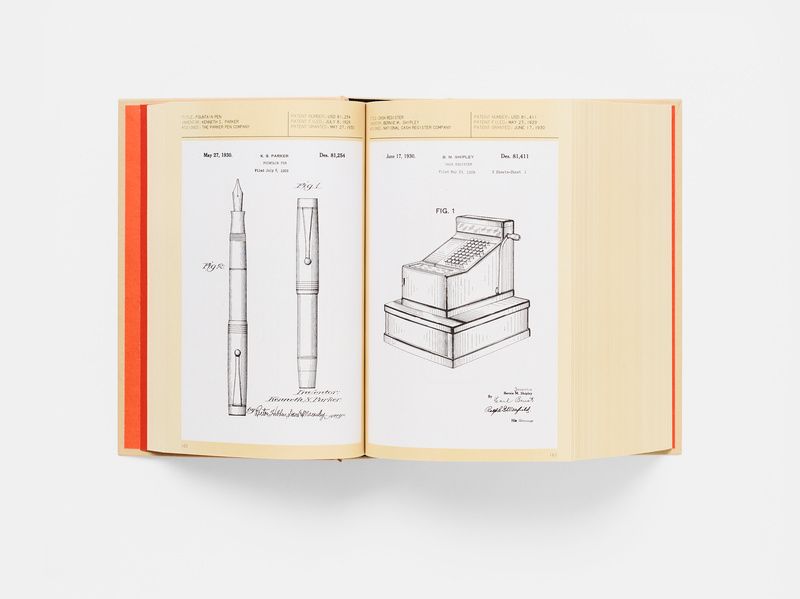
“Over the course of years and years I started to amass them,” Rinaldi explains. He would start with a particular object, “something from the canon of industrial design or something interesting to me that I found at a flea market,” and look up its design patent. Sometimes, if you are lucky, the patent number will be stamped on the object. The letter “D” denotes the number as the design patent number. Once the patent was found for the particular item Rinaldi looked up, he would investigate the other design patents held by that specific industrial designer. “This process wound up sometimes yielding just one or two things or nothing else, but other times it was like flipping stadium lights on and you see this whole body of work come to light of a person you never heard of before but who turns out to have been prolific,” says Rinaldi.
In addition to starting with a specific item, Rinaldi would also research patents by typology, collecting, for example, all of the design patents for clocks, “and there are a lot of them,” he notes. When searching through these various lenses, Rinaldi explains “you wind up with these intersecting lines of investigation which spotlight these forgotten and obscure but really important designers.”
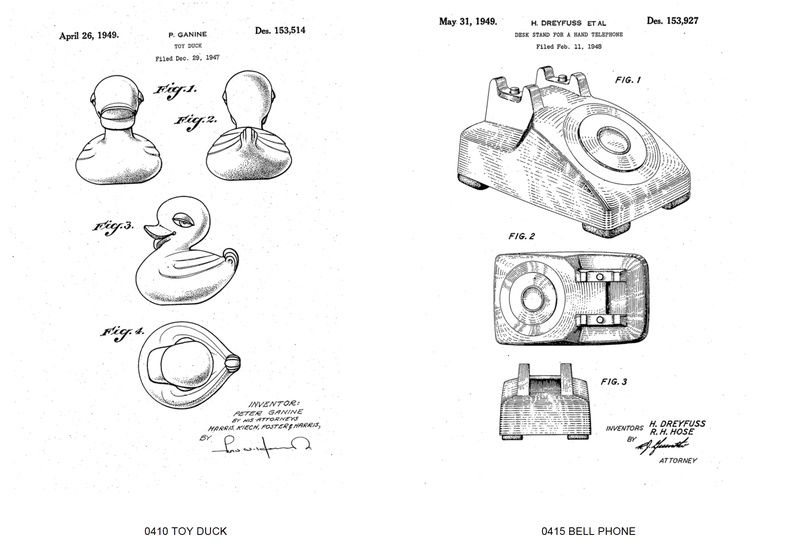
Once it came time to put Patented together, Rinaldi initially assumed 1,000 spots would offer plenty of room to include all the design patents he wanted. “Turns out, 1,000 was not nearly enough,” Rinaldi exclaims. In the book, he sought to curate a selection of items that “juxtaposed staples, the landmarked works, with the more anonymous work” in order to “elevate the stature of some lesser-known things, like tape dispensers.” Within the pages of Patented, you’ll find iconic pieces by well-known designers, like chairs designed by Eero Saarinen and Charles and Ray Eames, but you’ll also find items by famous designers that you wouldn’t expect them to have designed. Rinaldi points out a bathroom sink designed by Gio Ponti (who also designed a bidet that didn’t make it into the book). “There is a whole series of toilets by famous designers,” Rinaldi says. The book is filled with items that are familiar to us, from toasters and toilet brushes to vacuums and staplers, cellphones and video game consoles. What the book reveals about these items is the connection between them, how seemingly unrelated items are linked through various factors of industrial design and the evolution of things.
Patented is arranged in chronological order with “case studies” at the beginning that group items of the same typology. By arranging the items chronologically, Rinaldi says, “I wanted to emphasize that there is a relationship between all these objects of different typologies. There is a stylistic evolution that you see that transcends typology. I wanted part of the revelation for people to be that there is a relationship between radios and bathroom fixtures, these things you never really think of being related.” The first item in the book is a billiard table from 1900 designed by Daniel W. Delaney and the last, most recent item, is a respirator mask designed in 2020 by Pamela Gabriel, a fitting example of how the items we create are a sign of the times.
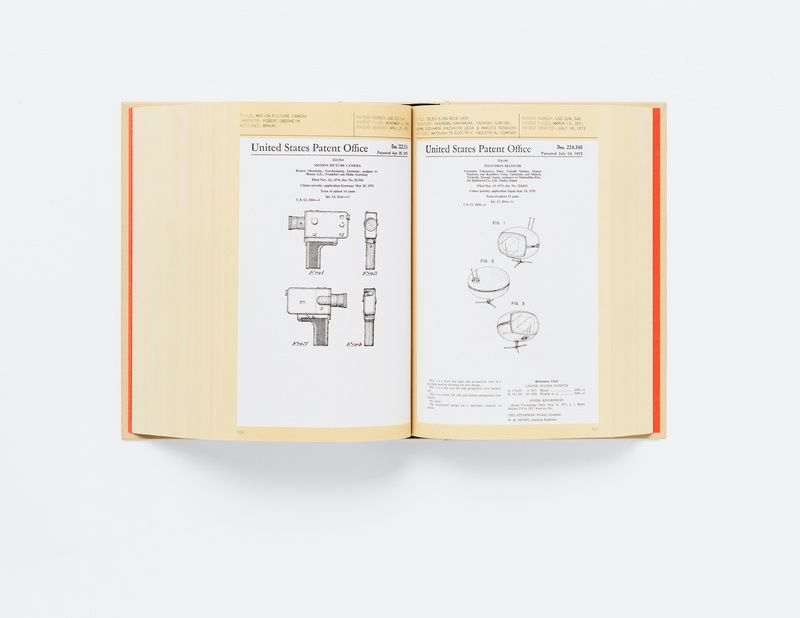
By looking at the items in chronological order, you can see they reflect the time in which they were made. Rinaldi explains how in the early items from the turn of the century, you will notice that the designs “take cues from the classical president. Everything from toasters to coffee mills had this ornament that corresponds to what you see in the architecture of the period.” This changes after the 1925 Art Deco Exhibition in Paris. Throughout the decades you can see the stylistic changes as items become more streamlined and then more boxy and so on. “It’s not just about style and aesthetics, but these changes are also a response to materiality,” Rinaldi explains. The design patents reveal shifting trends from wood to stamped metal and eventually to plastics. The prevailing materials and manufacturing techniques affect the design. “This is something I hope people keep in the back of their head as they flip through the chronological sequence,” says Rinaldi.
As you flip through pages of obsolete flip phones and outdated television sets, it is interesting to consider how we value certain items, while we let others fade into the past. This is something Rinaldi says he often contemplates. “I think rarity has something to do with it,” he muses. The main thing, he surmises, that saves an object from being put out on the curb, is its ability to stand out because of its design. “Once something has a certain look, that, you don’t have to be an expert of any kind to at a quick glance see there is a contrast between the thing and everything else in your life, the thing is just different. Those kinds of contrast are very meaningful and difficult to quantify.”
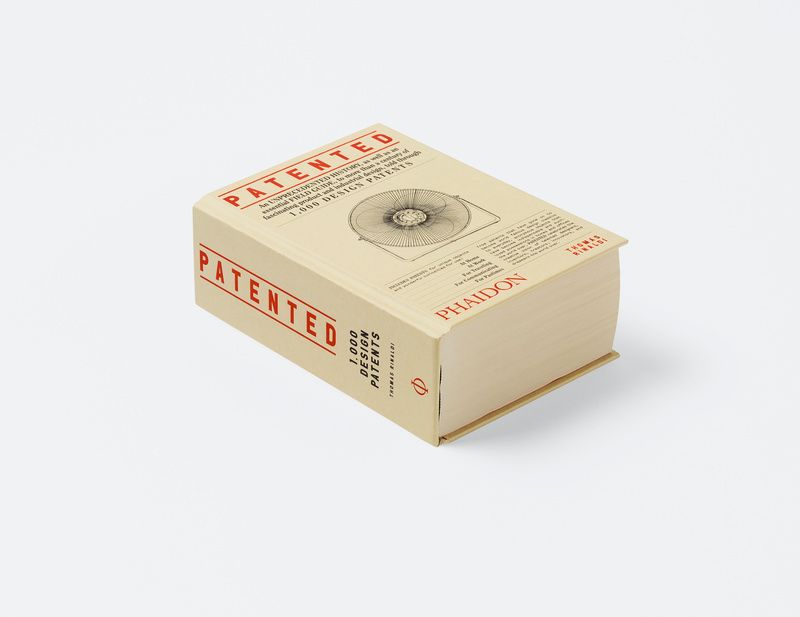
After more than a year of being stuck in our homes, forced to look at all of the things around us, Rinaldi hopes Patented will be a revelation for readers, as it was for himself. “It’s added a kind of magic to looking around a room and seeing things as more than just background stuff but as things that have a story behind them and a relationship to one another. I hope it enriches the way people look at their surroundings.”

Patented: 120 Years in 1,000 Designs
Patented is available now! Attendees to Untapped New York’s upcoming virtual talk with author Thomas Rinaldi will recieve a special discount code for 20% off thanks to Phaidon Press! If you are an Untapped New York Insider, you can attend the talk for free! Gain access to unlimited free virtual events per month and unlock a video archive of 100+ past virtual experiences as an Untapped New York Insider starting at $10/month. Already an Insider? Register here! If you can’t make it live, register for this event and we will send you a link to the recording once it airs!
Next, check out 11 Things You Didn’t Know Were invented in NYC
Subscribe to our newsletter